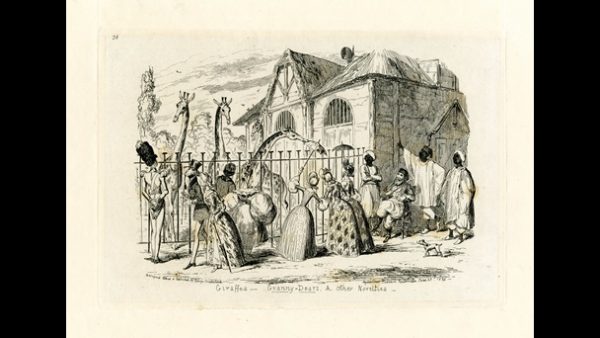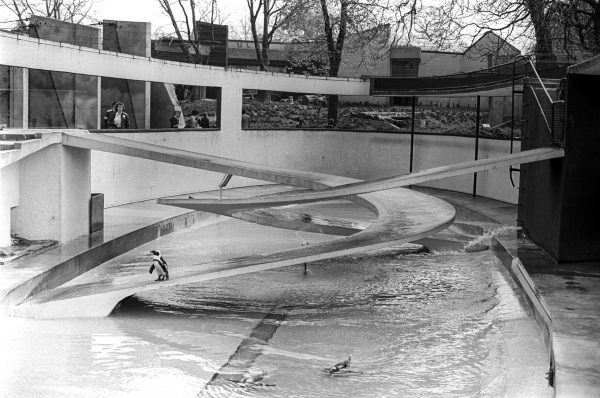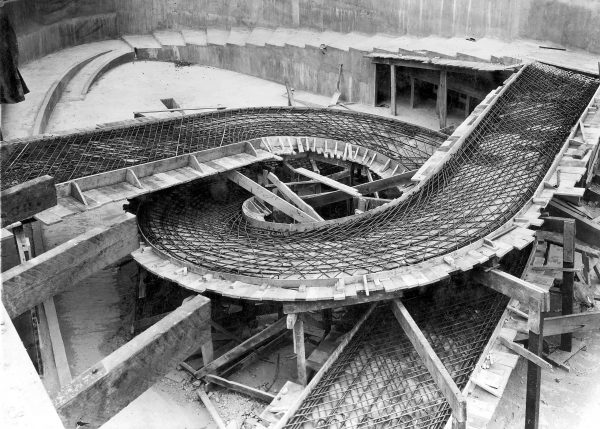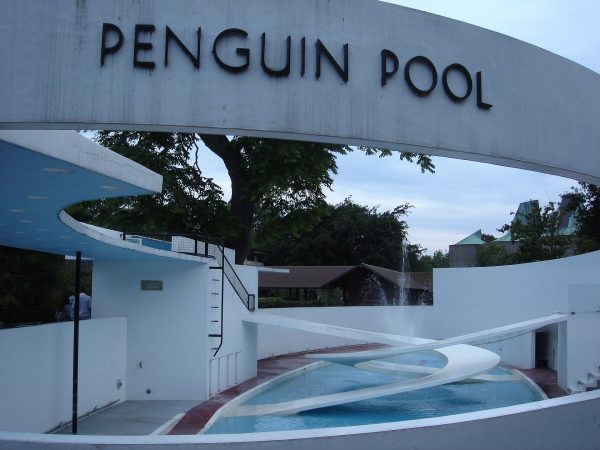Delaney Hall: The Problematic Penguin Pool
When a new penguin pool was originally built in 1934 at the London Zoo, it was a groundbreaking work of engineering. But today, there’s a lot of drama over why the pool is now empty — and what to do with it.

For context, the London Zoo is one of the oldest modern zoos, founded way back in 1828. At first, animals were largely sorted into groups — monkeys in a “monkey house” or penguins with their own enclosure and pool. On the whole, zoos were mainly animal jails back then. By the time this penguin pool came around, designers had begun to transition toward more open exhibits. And this shift dovetailed with the rise of an architectural movement: Modernism.

Modernist zoo exhibits had things like concrete cubes and blocky sculptural elements and clear lines. There was a good argument in favor of these new environments being cleaner (and easy to keep that way). But they weren’t always the best spaces for animals. This penguin pool fit into this transitional period, featuring an amazing set of wrapping ramps that were more for viewers than for the animals themselves. Still, for decades the pool more or less worked for both.

Berthold Lubetkin designed this pool, but a lot of the credit also goes to Ove Arup, the famous engineer behind the Sydney Opera House. The pool came earlier in his career, and at the time this work was quite ambitious. It featured concrete spirals that seemed to almost float, made possible using copious amounts of hidden steel reinforcement.
And for 50 years or so, penguins lived in the pool area with relatively few problems. But eventually zookeepers started noticing that penguins were getting infections — specifically something called bumblefoot, which is a type of bacterial infection. And this happened in the wake of a renovation, in which quartz granules were added to make the surfaces less slippery, at the expense of the penguins’ health. The zoo claimed the enclosure on the whole was the problem, while others say it was the renovation that caused these health issues.
And there’s another angle, too: John Allan, who worked on restoring the pool, says that the original birds selected for this pool were an Antarctic species that generally huddles together. When those penguins were swapped out for a species that prefers to burrow, the habitat just wasn’t as well suited for them. So maybe it was just the redesign, or the changing of species, or some combination. The penguins were moved, and the pool now sits empty.

There are many questions today: who is to blame for the pool failing its penguins, but also, what do we do with this empty modernist pool? The architect’s own daughter, Sasha, has suggested the zoo can just, quote, “blow it to smithereens,” and move on. She says the pool has outlived its usefulness. But some preservationists really want to save it, and it is a historical landmark, which favors their case. One especially vocal London newspaper editor wrote that tearing the place down would be a quote “act of cultural vandalism.” And he called Sasha’s offhand statement about blowing up her father’s pool altogether “patricidal.”
Meanwhile, the penguins have been moved on to a new penguin beach, which is a good example of the latest trend in zoo design. These days, there is more of a focus on faithfully recreate the actual native habitats of the animals who live there. So in this case, that means a replica South American beach landscape, with lots of plants and water, deep enough for diving, as well as sand the penguins can burrow in (for part of their mating ritual). And there are rocks for the penguins to walk on instead of concrete with quartz granules. This beach mimics the places these penguins actually live in the wild. So for their part, the penguins have shuffled along, but the old pool remains empty and up for debate.



Comments (4)
Share
On the topic of Michael Phelps & sculpting, he has (or certainly had) sculpted his body to a degree that many would find very easy on the eye, for a given definition of ‘sculpt’ of course.
And on the topic of the NBA logo, I would think that democracy and some ground rules are the answer here.
a. The basic format of the logo stays the same, only the silhouette would vary.
b. Allow submissions of silhouettes from current players within the association.
c. The players upon whom the silhouettes are based must be dead.
d. Only the current players within the Association may vote.
e. They may vote for, say, 5 silhouettes in order of their choice and the single transferable vote is used.
f. The silhouette that eventually reaches the quota is chosen. If the quota is not reached and there are no more transferable votes, the silhouette with the highest rank is chosen. In the event of a tie, a coin is tossed.
g. The logo is changed once a decade on the same date (or xth weekend of a month).
Here we let the players choose and one of the great players of the past will be honoured. It is democratic and those who disagree will have to live with it.
Regarding the NBA logo, why don’t they use an image of a basketball entering the net? Do away with the player totally.
On the topic of the NBA Logo, why not just have the logo for the year be a silhouette of the previous year’s MVP? This way the logo would remain current and even provide a new, interesting revenue stream for the NBA.
In this episode, Mary Roach paints Canada Geese and their abundant feces as a harmless nuisance. This is false and a bit shocking to hear being asserted on this podcast without being fact checked. There are a number of associated pathogens in avian waste that can enter the water, soil, and air. This is permanently etched in my mind as construction at my medical school aerosolized particles of Great Egret droppings from a rookery on campus, resulting in several people becoming severely ill with pulmonary histoplasmosis. One person required a pulmonary lobectomy as a result.
There are several peer-reviewed articles written on the pathogens associated with Canada Geese in specific. The CDC has a more layman-oriented document on this: https://www.cdc.gov/niosh/docs/2005-109/pdfs/2005-109.pdf